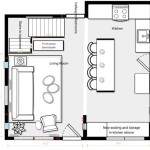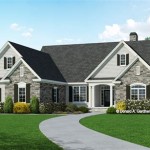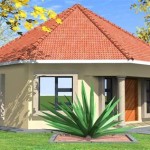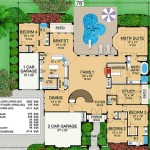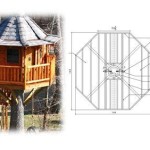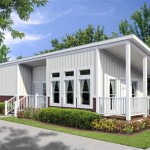Simple Kerala House Plans With Photos Style
Kerala house plans are renowned for their aesthetic appeal, functionality, and integration with the natural environment. Characterized by sloping roofs, spacious verandahs, and a focus on natural light and ventilation, these designs have evolved over time to incorporate modern amenities while retaining their traditional charm. This article explores various simple Kerala house plans, showcasing their architectural styles, key features, and design elements, supplemented with photographic examples to provide a visual understanding.
The simplicity in Kerala house plans often stems from their emphasis on practicality and cost-effectiveness. Using locally sourced materials like laterite stone, wood, and clay tiles, these designs aim to create comfortable and sustainable living spaces suitable for the tropical climate. While elaborate designs exist, the beauty of simple Kerala house plans lies in their ability to provide elegant and functional homes without excessive ornamentation or complex construction techniques.
Before delving into specific examples, it's important to understand the core principles guiding simple Kerala house plan design. These include maximizing natural light and ventilation, utilizing open floor plans to create spaciousness, and incorporating traditional elements like courtyards (nadumuttam) and sloped roofs to manage rainfall effectively. The integration of the house with the surrounding landscape is also a crucial aspect, with verandahs serving as transition spaces between the indoors and outdoors.
Key Point 1: Understanding the Traditional Elements
Traditional Kerala house plans are heavily influenced by the region's climate, cultural values, and available resources. The use of sloping roofs is paramount, designed to efficiently drain rainwater and prevent waterlogging. These roofs are typically constructed using clay tiles, which provide insulation and help regulate indoor temperatures. The pitch of the roof varies depending on the amount of rainfall expected in the specific region.
The nadumuttam, or central courtyard, is another significant feature. This open space not only provides natural light and ventilation but also serves as a focal point for the household, often incorporating a small garden or a tulsi plant. The nadumuttam fosters a sense of connection with nature and promotes social interaction within the family.
Verandahs, or padippura, are integral to Kerala house designs, offering shaded outdoor spaces for relaxation and social gatherings. They act as buffers between the interior and exterior, protecting the house from direct sunlight and rain. The verandahs are often adorned with intricately carved wooden pillars and railings, adding to the aesthetic appeal of the house.
Furthermore, the use of locally sourced materials is a defining characteristic of traditional Kerala architecture. Laterite stone, readily available in the region, is used for constructing walls and foundations. Wood, particularly teak and rosewood, is employed for doors, windows, pillars, and roofing structures. The use of these natural materials not only reduces construction costs but also ensures the sustainability of the building.
In many simple Kerala house plans, the layout follows a rectangular or square pattern, often adhering to the principles of vastu shastra, the traditional Indian system of architecture that emphasizes harmony between the building and its environment. This involves orienting the house in a specific direction, typically facing east or north, to maximize positive energy flow.
While the traditional elements remain central, modern interpretations often adapt these features to suit contemporary needs and lifestyles. For instance, the nadumuttam may be reduced in size or replaced with an indoor garden, and modern roofing materials may be used in conjunction with traditional clay tiles.
Key Point 2: Exploring Contemporary Adaptations
Modern Kerala house plans often incorporate contemporary design elements while retaining the essence of traditional architecture. This fusion results in aesthetically pleasing and functional homes that cater to the needs of modern families. A key aspect of contemporary adaptations is the use of open floor plans, which create a sense of spaciousness and facilitate social interaction.
Large windows and glass doors are frequently incorporated to maximize natural light and offer panoramic views of the surrounding landscape. These elements not only enhance the aesthetic appeal of the house but also contribute to energy efficiency by reducing the need for artificial lighting during the day. However, the inclusion of large glass surfaces requires careful consideration of solar heat gain, often mitigated through the use of shaded verandahs and strategically placed louvers.
Concrete is increasingly used as a primary construction material in modern Kerala house plans, offering durability and cost-effectiveness compared to traditional laterite stone. However, architects often employ cladding materials like laterite or wood to maintain the aesthetic appeal of traditional Kerala architecture. The use of exposed brickwork is also a popular trend, adding a rustic charm to the building.
The layout of modern Kerala house plans often prioritizes functionality and privacy. Bedrooms are typically located away from the main living areas, and en-suite bathrooms are common. The kitchen is often designed as an open space connected to the dining area, creating a social hub for the family. Modern amenities such as home theaters, gyms, and study rooms are also incorporated into the design, reflecting the evolving needs of contemporary families.
Sustainability is a major focus in modern Kerala house designs. Solar panels are often installed on the roof to generate electricity, and rainwater harvesting systems are implemented to conserve water. Energy-efficient lighting and appliances are used to reduce energy consumption. The use of eco-friendly building materials, such as bamboo and recycled wood, is also encouraged.
Landscaping plays a crucial role in modern Kerala house designs. Gardens are carefully planned to complement the architecture of the house and create a seamless transition between the indoors and outdoors. Native plants are typically used to minimize the need for irrigation and maintenance. Vertical gardens and green roofs are also becoming increasingly popular, adding a touch of greenery to the urban landscape.
Key Point 3: Practical Considerations for Simple Kerala House Plans
When planning a simple Kerala house, several practical considerations need to be addressed to ensure the comfort, functionality, and longevity of the building. These include site selection, budget constraints, material availability, and local building regulations. Careful planning and attention to detail are essential to create a successful and sustainable home.
Site selection is a critical factor. The orientation of the house should be carefully considered to maximize natural light and ventilation while minimizing exposure to direct sunlight. The slope of the land should be taken into account to ensure proper drainage and prevent waterlogging. Soil testing is also recommended to determine the suitability of the site for construction.
Budget constraints often play a significant role in determining the design and materials used in a simple Kerala house. Opting for locally sourced materials can significantly reduce construction costs. Simple and functional designs are generally more cost-effective than elaborate and ornate structures. Prioritizing essential features and amenities can also help to keep the budget under control.
The availability of materials is another important consideration. Using locally sourced materials not only reduces transportation costs but also supports local industries. Working with local contractors and artisans can also ensure the availability of skilled labor and expertise.
Local building regulations and zoning laws must be strictly adhered to during the planning and construction phases. Obtaining the necessary permits and approvals from the local authorities is essential to avoid legal complications. Engaging a qualified architect or engineer can help to navigate the regulatory process and ensure compliance with all applicable codes and standards.
Proper ventilation is crucial in Kerala's humid climate. Designing the house with ample windows and cross-ventilation can help to maintain a comfortable indoor environment. Skylights and ventilation shafts can also be incorporated to improve air circulation. The use of ceiling fans and exhaust fans in kitchens and bathrooms is also recommended.
Water management is another important consideration. Installing a rainwater harvesting system can help to conserve water and reduce reliance on municipal water supplies. Proper drainage systems should be installed to prevent waterlogging and protect the foundation of the house. Landscaping should be designed to promote water infiltration and prevent soil erosion.
Energy efficiency should be a key focus in the design of a simple Kerala house. Insulating the roof and walls can help to reduce heat gain and loss, thereby lowering energy consumption. Using energy-efficient lighting and appliances can also significantly reduce energy bills. Installing solar panels on the roof can provide a sustainable source of electricity.
Finally, maintenance should be considered during the design phase. Choosing durable and low-maintenance materials can help to reduce the long-term costs of upkeep. Regular inspections and maintenance can prevent minor problems from escalating into major repairs.

Kerala Style Single Floor House Plan 1500 Sq Ft Home Design And Plans 10k Dream Houses

Small Kerala Style Home

Simple And Beautiful Kerala Style 3 Bedroom House In 1153 Square Feet With Plan

Kerala Simple House Design

Small Kerala House Plans At 1000 Square Feet Everyone Will Like Acha Homes Page

20 Latest Kerala House Design Ideas In 2024

Simple Kerala Style Home Design At 1155 Sq Ft

Best Kerala House Designs Floor Design Plans And Ideas

60 Kerala House Designs Trending In 2024 Traditional And Modern Look

Kerala Style House Plans Low Cost Small In With Photo

